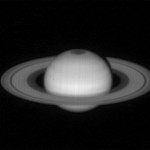The data produced by the W. M. Keck Observatory is available for anyone to view. This may come as a surprise to some who assume that astronomers hoard their precious data and jealously deny any access. I have also seen claims by anti-TMT activists who claim that telescope data is secret and access is restricted to some authorized group. It is a common theme I have seen repeated quite a few times during the Astronomy on Mauna Kea debate.

“There is an appointment signup of experts of bureaucrat choosing and the findings disappear amongst the grant supported or institutions we have no knowledge about” – Claire Templeton in a Facebook comment 16Aug2015
The idea is at least understandable. Much of modern astronomy is fairly arcane to the layman, not easily understood and seemingly mysterious. It does not have to be that way, the images and data are fully public. A small community, including astronomers and amateur astronomers, has learned to use the data to do science, or to simply peruse for their own edification. All it takes is an evening of educating yourself and you have access to a huge array of data.
The astronomers do guard their data and deny others access, but they are only allowed to do this for a limited period of time. This gives the astronomer exclusive use of their data long enough to complete the research and publish the paper. The amount of time they have exclusive use varies by telescope and institution, but it is usually a year or two. For the W. M Keck Observatory the data is usually embargoed for 18 months. Once the exclusive period expires the data is available to anyone and is posted in the online public archive.
Keck’s archive is known as KOA, or Keck Online Archive. Also a nice reference to the beautiful Koa forests that are common on the windward slopes of Mauna Kea. Here you can search and peruse twenty years of Keck data.
One mystery is the file format used, something astronomers call FITs files, or Flexible Image Transport files. There is nothing too strange about this format, it is easy to view. It is simply like any other computer file format such as JPG, TIFF or GIF, you just need to set up some software to use the format. You can download a few different FIT’s viewers. I use the free graphics program Irfanview to view FITs images. You can even get a Photoshop plugin for FITs.
This file format was developed for scientific astronomy data by astronomers at Kitt Peak Observatory in 1981. FITs are the first type of image file to include metadata. These days most people are familiar with metadata, information stored in the file a alongside the image itself. This data includes the date and type of camera used, the camera settings and often the GPS coordinates of the image. Back in 1981 this was an unheard of idea.
Astronomers needed metadata to properly calibrate the image for research. The FITs headers would include the telescope, the time and date the image was acquired, the telescope coordinates, instrument settings like filters and gratings used, and a wide array of other data. These bits of information would be used to calibrate the image and record other information that was critical in a data set that was to be used for science.
I have spent more than a few hours pulling up imagery in the archive. I tend to go for the NIRC2 instrument data taken with the Keck 2 AO system. Setting the search for NIRC2 and Jupiter or Saturn for the target name turns up some beautiful images. Considering the many days I have spent maintaining that system it is nice to look at the results.


thanks for the link Andrew